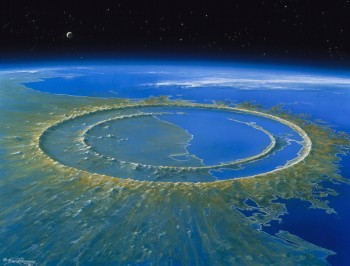Drilling Into the Chicxulub Crater, Ground Zero of the Dinosaur Extinction
November 22, 2016

Some 66 million years ago an asteroid crashed into the Yucatán Peninsula in Mexico, triggering the extinction event that obliterated the dinosaurs and nearly extinguished all life on Earth. It struck with the same energy as 100 million atomic bombs, and left behind a 100-mile-wide scar known today as the Chicxulub crater.
Now, a team of geophysicists has drilled into the gigantic cavity under the Gulf of Mexico, targeting a circular series of hills called a peak ring located at its center. What they discovered illustrates that powerful impacts can catapult materials buried deep in a planet’s crust much closer to its surface.
The New York Times, Nov.17, 2016
Nature, Nov. 17, 2016
International Business Times, Nov. 17, 2016
Ars Technica, Nov. 17, 2016
New Scientist, Nov. 17, 2016
The Daily Mail, Nov. 17, 2016
Cosmos, Nov. 17, 2016
UPI, Nov. 17, 2016
BBC News, Nov. 18, 2016
Huffington Post UK, Nov. 18, 2016
Eos, Nov. 17, 2016
Astronomy Magazine, Nov. 17, 2016
FOX News, Nov. 18, 2016
The Christian Science Monitor, Nov. 18, 2016
KUT, Nov.28, 2016
Featuring: Sean Gulick, research professor, the University of Texas Institute for Geophysics, Jackson School of Geosciences
